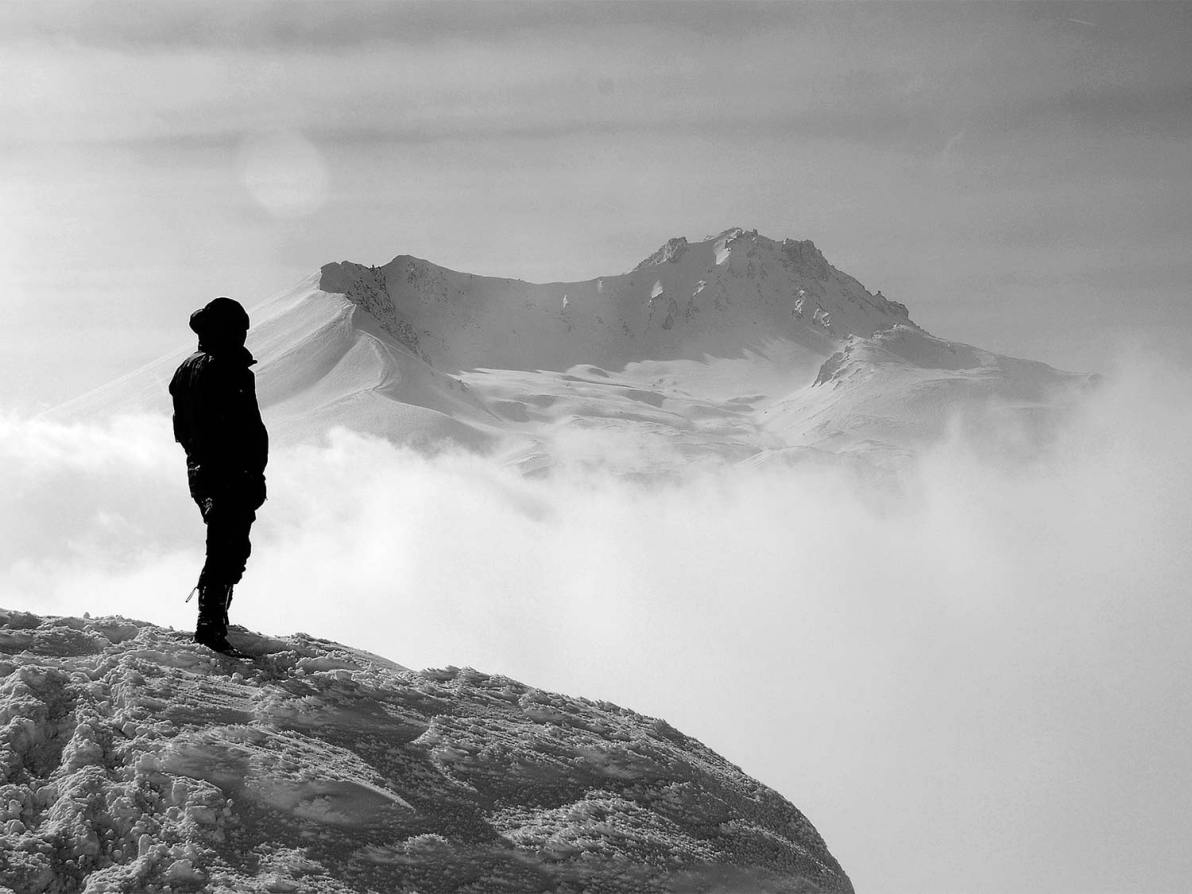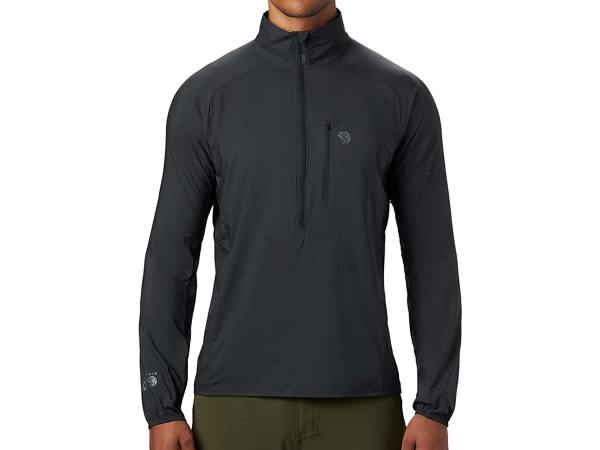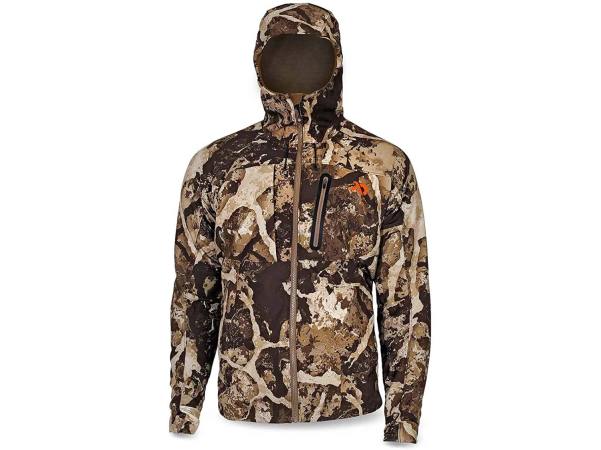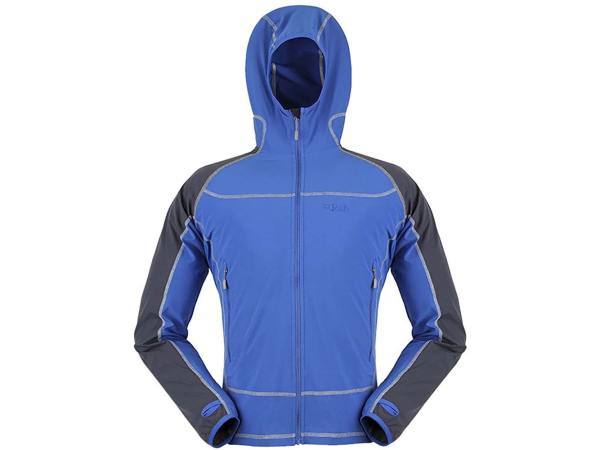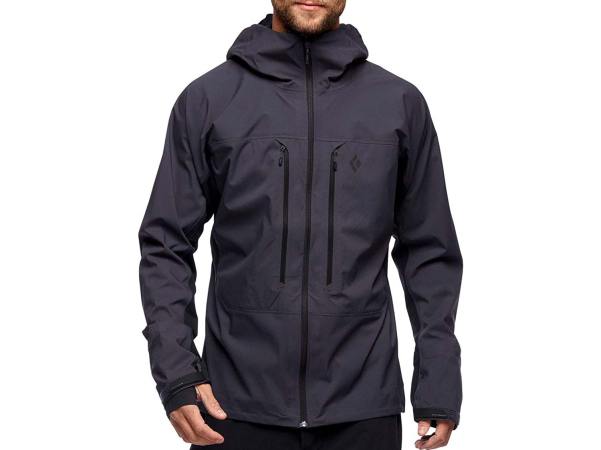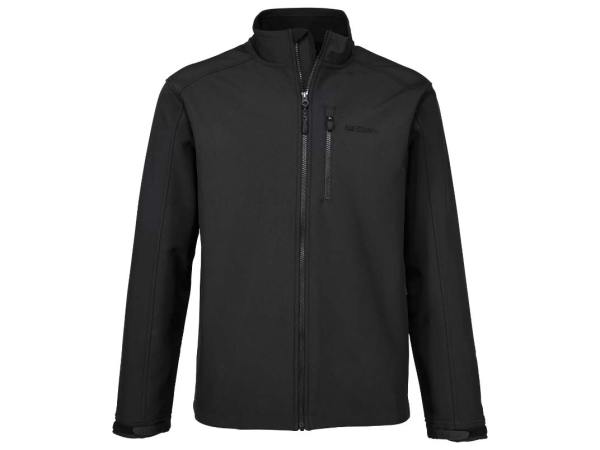We may earn revenue from the products available on this page and participate in affiliate programs. Learn More ›
A hunter looking for elk sign in the snowy woods. A hiker exploring above the treeline in the whipping wind. A cross-country skier working up a sweat. Different situations for different people, but all will benefit from a soft shell jacket. Such a jacket is an ideal choice for when you need warmth and some protection from wind and precipitation, but don’t want to sacrifice breathability and comfort—which many waterproof shells do. The best soft shell jackets provide all the weather protection you need in most conditions, while also remaining comfortable to wear even during high-exertion activities. Most are stretchy, making them ideal for active pursuits. They’re lightweight, so you won’t feel bogged down. And they can be an excellent choice year-round, from cooler alpine conditions in the summer to truly cold, snowy days when you need full ski apparel. Soft shells range from ultralight wind shells to coats made for extreme cold, so how do you know which one to choose? Our winter clothing guide will point you to some of the best options for a variety of uses and weather conditions.
Best Lightweight Jacket: Mountain Hardwear Kor Preshell Pullover
Best Tactical Soft Shell Jacket: First Lite Catalyst
Best Breathable Soft Shell Jacket: Rab Zephyr
Best Soft Shell Ski Jacket: Black Diamond Dawn Patrol Hybrid
Best Cheap Soft Shell Jacket: RedHead Radius
Features to Consider When Shopping for the Best Soft Shell Jacket
The best soft shell jackets will balance weather protection and breathability, but there are several other variables to consider when you’re browsing. First, how much protection do you need? If you’re going to be out in extended rain or really sloppy snow, you’ll need a fully waterproof hard shell. But hard shells aren’t ideal for the majority of conditions because they’re less breathable. The highest-quality waterproof jackets use a membrane that keeps water out: These membranes do allow some sweat vapor to escape, but it’s easy to build up too much heat inside of a waterproof shell. Soft shell jackets, on the other hand, typically do not have a membrane, so it’s much easier for body heat to get out before you overheat. The tradeoff is that they won’t provide complete protection from continually driving rain—you need a waterproof jacket for that. That said, some soft shell jackets will last quite a long time before they soak through, while others will get you wet after just a few minutes in the rain.
Your intended activity also matters a lot when shopping for a winter jacket. If you’re going to be working hard—trail running, cross-country skiing, hiking steep trails—then a lightweight jacket is probably best. If you’ll be doing more moderate activities, like lift skiing or snowboarding, a thicker, more protective shell will fit better. And if you won’t be moving much (sitting in a tree stand for hours comes to mind), an even heavier, insulated option is for you.
Also think about features: Do you want a hood? Extra pockets? Adjustable cuffs? Pit zips (zippered vents under the arms to release extra body heat)? Soft shell jackets come with all these features, and more.
Do You Want a Lightweight Jacket for Windy Weather?
When you’re hiking high-altitude summits, trail running, hiking in mild conditions, or just hanging around camp, a lightweight jacket is the best choice. Thinner fabric equals better breathability, as there’s less material your body heat needs to push through to escape, and also makes the soft shell packable and easy to cram into a backpack. A jacket with a zippered chest vent adds to the comfort factor by letting you vent body heat directly when you’re really moving.
But a light soft shell jacket will still give you the wind resistance you need to stay warm when breezes pick up. Look for one treated with a DWR (durable water repellent) to add some protection from light precipitation. Most jackets in this category will also have ample stretch so you can reach and swing your arms without restriction.
Best Lightweight Jacket: Mountain Hardwear Kor Preshell Pullover
Packable Wind Protection
Made from Pertex Quantum Air Ripstop nylon fabric, this airy soft shell is highly breathable yet still offers protection from wind and light rain. This lightweight jacket is stretchy for maximum comfort and mobility, and includes a chest pocket for small essentials like keys and credit cards.
Do You Need a Soft Shell Jacket for Hunting?
Hunters need a soft shell jacket with several key features. It should have numerous pockets so you can keep snow gear at the ready. And the material should be soft, to prevent any rustling sounds that would spook game. The tactical softshell jacket should be warm enough to keep you comfortable when you’re not moving, but still breathable enough to let sweat vapor escape when you’re exerting yourself. Weather protection is a must, of course, in case you run into unexpected precipitation or winds. And a neutral or camouflage pattern is a helpful bonus.
Best Soft Shell Hunting Jacket: First Lite Catalyst
Technical Camo Style
The Catalyst tactical jacket features a two-layer construction with a water-repellent exterior and warm, fleecy interior. The inner layer boasts 37.5 technology, which embeds active particles into the fabric that help disperse moisture for breathability and temperature regulation. Supersoft fabric won’t rustle or crinkle, and you also get two hand pockets and a chest pocket for toting tools.
Highly Active? Consider an Ultra Breathable Soft Shell Jacket
The best softshell jacket for aerobic activity (think trail running, cross-country skiing, or strenuous hiking) is the one that lets sweat vapor and body heat out quickly before you start to overheat. The tradeoff for maximum breathability is less weather resistance, though, so you’ll need a waterproof hard shell for anything more than short drizzles or snow bursts. Some shells in this category split the difference with a hybrid design that places more protective fabric on the shoulders and hood, and more breathable fabric in the zones that heat quickly, like the underarms.
The soft shell jackets best suited for heart-pounding activities also tend to be lightweight and very stretchy, so you can move freely. And don’t think a breathable soft shell is only for warm weather: It also serves as a great winter coat when you’re working hard snowshoeing or skiing.
Best Breathable Soft Shell Jacket: Rab Zephyr
Supreme Comfort
The Zephyr delivers year-round utility for aerobic endeavors: The polyester-spandex blend on the body is highly breathable, while the denser nylon-spandex blend on the shoulders and arms adds durability where you need it. The shell features a stretchy hood, two zippered hand pockets with mesh behind them for extra venting, and thumbholes.
Are You Looking for a Ski Jacket or Soft Shell Snowboard Jacket?
Soft shells serve well as a ski jacket or snowboard jacket: Unless you’re dealing with unusually heavy, wet snow, their water resistance (instead of waterproofness) is enough to keep you dry on the slopes. Here’s another place where a hybrid design shines, too: A jacket with waterproof panels matched with more breathable soft shell panels will protect the areas that take the brunt of falling rain or snow (like the head, shoulders, and arms) while still maintaining comfort.
A winter jacket should also be a bit heavier, and therefore warmer. Some winter soft shells have light insulation or a fleece liner for extra coziness. You’ll appreciate the warmth when you’re riding the chairlift or ripping downhill. Also look for winter sport-friendly features like a hood that fits over a helmet, a snow skirt, or a ski pass pocket.
Best Soft Shell Ski Jacket: Black Diamond Dawn Patrol Hybrid
Part Waterproof, Part Breathable
With three-layer waterproof material on the shoulders and hood, this soft shell snowboard jacket or ski jacket provides more protection from snow, rain, and sleet than most soft shells. But the water-resistant soft shell fabric on the body of the jacket means it’ll keep you comfortable when moving. It includes four external pockets and two inner ones, an adjustable hem, and a helmet-compatible hood.
Budget Soft Shell Jackets: What You Get for Less Than $60
Technical apparel can get expensive. If you’re not planning to be out in the wilderness for extended periods or hitting the slopes in the snow, there’s no reason to shell out for a spendy soft shell. A bargain jacket will still protect you from moderate weather and be comfortable enough to wear to work or walk the dog, while providing enough performance for shorter hikes or nature excursions.
The most expensive soft shells will have more technical features, top-shelf windproof or wind-resistant technology, dialed-in fit, and longer-lasting durability. But if you don’t mind those tradeoffs, a cheap soft shell jacket will get the job done.
Best Cheap Soft Shell Jacket: RedHead Radius
Streamlined Design
This hoodless jacket has a windproof and water-resistant finish for light protection, while polyester fabric lets heat escape. A high collar adds a touch of warmth, and it includes two hand pockets and a chest pocket.
FAQs
Simply put, the difference between a hardshell and a softshell jacket is that a hardshell jacket is completely waterproof. This is typically achieved by using a waterproof/breathable membrane as an inner layer or a waterproof coating on the exterior, plus taping the seams so no water can drip in through the needle holes. That’s great for weather protection, but it also means even the best hardshell jackets trap body heat to a degree. Soft shell jackets offer some level of wind and water resistance (often through a DWR coating on the outside), but they’ll eventually soak through. As a rule, soft shells are also stretchier than hardshells, too.
Soft shell jackets are good for many different activities. People don’t usually want to wear a waterproof jacket all day because they’ll overheat. A soft shell is much more breathable and comfortable to wear for hours on end, and unless it’s really pouring, it’s protective enough. These qualities make soft shells great for activities that build up body heat, such as hiking, running, and cross-country skiing. Ultralight wind shells are also considered soft shells and are great for when you’re in exposed terrain (like on a mountaintop).
A heavyweight soft shell jacket will be a lot warmer than a lightweight wind shell, especially if it includes insulation or a fleecy lining. This type of soft shell is great for times when you’re less active, and/or it’s really cold. Many winter-weight soft shells are also designed to be worn over a fleece or puffy coat, boosting warmth when you need it.
A Final Word on Finding the Best Soft Shell Jacket
A soft shell jacket will be a very versatile addition to your closet—if you pick the right one. The best soft shell jacket for you will match your intended activities and weather conditions, have all the features you need, and will be the proper weight. Think about not just how cold it’ll be, but if you’ll be exerting yourself or mostly remaining in one place. That will dictate the weight of the soft shell jacket that you need.
